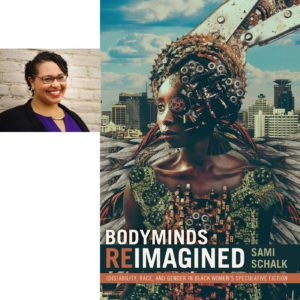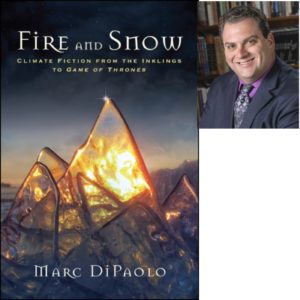Race, Gender, and Disability in Spec Fiction – “Bodyminds Reimagined” (Duke University Press, 2018) – Sami Schalk interview
Podcast: Play in new window | Download
Subscribe: Apple Podcasts | RSS
 Dr. Sami Schalk is an academic who studies race, gender and disability in contemporary American literature and culture. We spoke about her latest book on science and speculative fiction as it relates to her studies.
Dr. Sami Schalk is an academic who studies race, gender and disability in contemporary American literature and culture. We spoke about her latest book on science and speculative fiction as it relates to her studies.
1:05 – Sami first got into speculative fiction through Octavia Butler.
3:38 – Sami talks about her book.
5:00 – Sami mentions some of the works she studied like Stigmata by Perry and other works in the field.
10:29 – Sami talks about Octavia Butler’s letters and files and the studies she was doing in disability and science.
12:34 – Sami talks about some of the history of speculative fiction by minority groups.
14:45 – Film and tv are getting better with race and gender but not with disabilities.
16:35 – Sami talks about some of the fan websites she used to do her research.
21:41 – Sami talks about which disabilities are most written about and which are not written about as much.
25:37 – Sami talks about how Octavia Butler’s works presents power in uncomfortable ways. The dynamics Butler applies are complicated.
35:50 – Sami has a professional facebook page under Dr. Sami Schalk. She also has a twitter account @drsamischalk. Readers can buy the book on the Duke University Press at a 30% discount if they use the code “E18BODYM” without the quotes.
Links of interest
For more of “The Art and Design of Sci-Fi and Fantasy, Mystery and Horror” please follow me on Facebook at crisalvarezwlc, on youtube at Cris Alvarez and on Instagram @crisalvarezscifi
Guests: Sami Schalk
Host: Cris Alvarez
Tags: science fiction, speculative fiction, disability, gender, race, Octavia Butler, literature, culture
 Liz Denlinger co-curates the Shelley collection of the New York Public Library system. She has helped develop a new exhibition on Frankenstein and has put together a visual history of Frankenstein for it. We discuss the book and the exhibit.
Liz Denlinger co-curates the Shelley collection of the New York Public Library system. She has helped develop a new exhibition on Frankenstein and has put together a visual history of Frankenstein for it. We discuss the book and the exhibit.